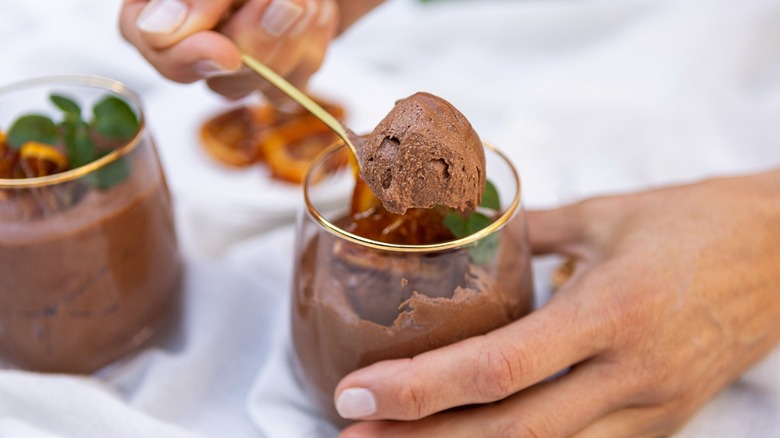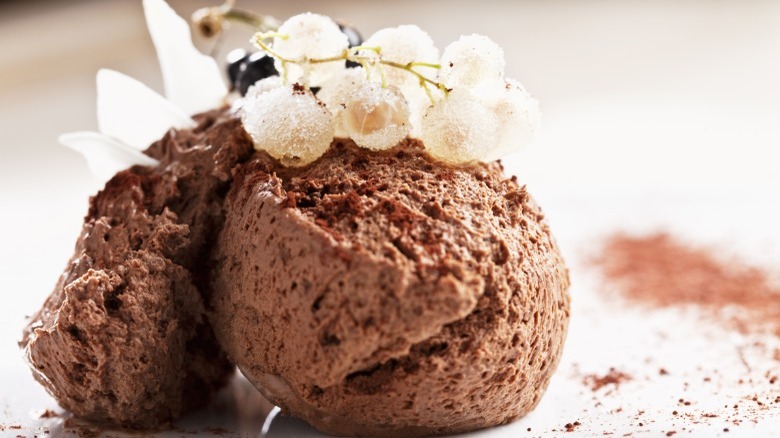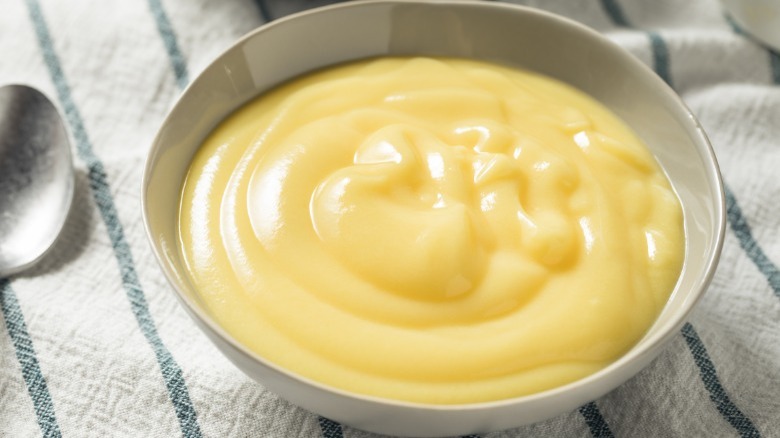The Textural Difference Between Mousse And Pudding
Is there anything better than topping off your French dinner with a bit of chocolate mousse? Maybe you'd prefer the rush of opening your lunch box in elementary school and seeing your parents had packed you a cold chocolate pudding. Both mousse and pudding are no-bake goodies that are the perfect way to fulfill your craving for a sweet treat — their small size ensures that you never get tired of them, and seasonal variations keep the flavors interesting.
Mousse and pudding are both enticing and creamy desserts, but they can be easily confused because of how similar they appear at first glance. Distinguishing between them might be difficult unless you know more about each one, but there are distinct differences between the two, especially as it pertains to their textures. Ultimately, the major difference in texture between a mousse and a pudding comes down to the specifics of how they're prepared.
What is mousse?
Mousse finds its origins in France in the 18th century. Its name literally translates to "foam" in English, which makes sense given the dessert's light and airy consistency. Mousse can be both sweet and savory, and making it is fairly simple if you have the right ingredients — all you really need is an aerator and a base. Aerators can be anything from merengue to whipped cream, and a base is pretty much what you want your mousse to taste like. If you want to make chocolate mousse, for example, melted chocolate will act as your base.
The texture of a mousse is unforgettable — a good mousse should be smooth, light, and airy. This airiness is achieved through the process of whipping the aerator ingredient and has to be done with care and not too intensely. While it's true that mousse is fairly simple to make once you know what you're doing, it's also a fairly technical job, and there are many issues that can occur that impact the texture. Minute temperature changes can cause graininess, and adding even slightly too much or too little of certain ingredients can create a less-than-ideal mousse.
So how is pudding different?
Unlike mousse, pudding most likely originated in England and was a savory dish resembling more what we'd think of as sausage rather than the sugary treat we know and love in the United States. Our version of pudding is much different and is more closely related to custard, which has origins in ancient Rome. Pudding is meant to be thick, soft, and silky, and is, therefore, a lot less airy than mousse.
This difference in texture lies in preparation. Pudding requires heat to come together with the right consistency, whereas mousse simply needs to be whipped together. For an easy vanilla pudding recipe, the sugar, salt, milk, and cornstarch are first heated and combined. The eggs are slowly added once the mixture is removed from the heat, and then the pudding is heated again to achieve the desired consistency before it's set in the fridge. The cornstarch in pudding acts as a thickening agent when it's heated which creates the much thicker texture we're used to experiencing when eating pudding.


